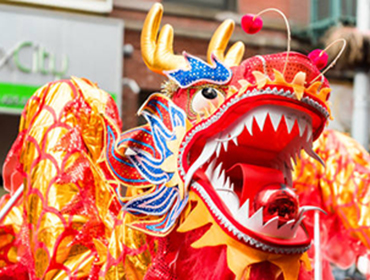

Lunar New Year
Lunar New Year: A Celebration of Heritage, Hope, and Togetherness
Lunar New Year is one of the most significant celebrations of the year across East and Southeast Asian cultures, including Chinese, Vietnamese, and Korean communities. Unlike the one-day celebration of the Gregorian calendar’s New Year, the Lunar New Year typically spans multiple days, marking a time of deep cultural traditions, joyous gatherings, and fresh beginnings. In 2024, the celebration begins on February 10.
In China, the Lunar New Year is known as the Spring Festival or Chūnjié in Mandarin. In Korea, it is called Seollal, and in Vietnam, it is known as Tết. Though traditions vary by country, the essence of the holiday remains rooted in family, respect for ancestors, and hopes for prosperity in the coming year.
Tied to the lunar calendar, the New Year usually begins with the first new moon between late January and mid-February and continues until the full moon on the 15th day. The holiday originally began as a time to honor household deities and ancestors, accompanied by feasting and communal gatherings.
Zodiac Animals and Elements
Each year in the lunar calendar is represented by one of 12 zodiac animals: rat, ox, tiger, rabbit, dragon, snake, horse, sheep, monkey, rooster, dog, and pig. In addition to these animals, the five elements—earth, water, fire, wood, and metal—are also associated with each year. These zodiac and element combinations influence not only the year’s fortune but also the personal traits of those born under them.
The year 2024 is the Year of the Dragon, a symbol of strength, good fortune, and transformation. The last Year of the Dragon occurred in 2012.
Foods and Traditions
Lunar New Year customs are rich with symbolic foods and meaningful rituals. Leading up to the holiday, homes are thoroughly cleaned to sweep away bad luck and make space for good fortune. Families often perform ancestral rites, offering food and paper icons to honor those who came before. Red paper banners with messages of good health and prosperity are hung around homes, and children receive money in festive envelopes as a blessing for a prosperous future.
Glutinous rice-based dishes are common across many cultures, symbolizing unity and togetherness. Other traditional foods also carry deep meanings tied to wealth, longevity, and happiness.
China
In Chinese celebrations, fish is often served as the final dish of the New Year's Eve meal, as the word for “fish” (yú) sounds like “surplus” or “abundance” in Mandarin. Dumplings (jiǎozi), glutinous rice balls, and rice cakes are staples, sometimes with a coin hidden in a dumpling for extra luck. The festivities conclude with the Lantern Festival, featuring parades, lantern displays, dances, and fireworks.
Vietnam
In Vietnam, homes are adorned with kumquat trees and vibrant flowers such as peach blossoms, orchids, and chrysanthemums. Travel is common during Tết as families reunite to honor their ancestors with five-fruit platters. Traditional dishes include bánh chưng, a savory rice cake made with mung beans and pork wrapped in bamboo leaves. Guests are welcomed with sweet snacks called mứt tết, made from dried fruits or seeds.
Korea
In both North and South Korea, tteokguk—a soup made with sliced rice cakes—is eaten to symbolize a clean and fresh start to the new year. Rather than red envelopes, New Year’s money is given in white or patterned envelopes. In South Korea, it is traditional for families to gather at the home of the oldest male relative to pay respects to elders and ancestors. In contrast, celebrations in North Korea are often observed at home, with less emphasis on travel.
Greetings of Good Fortune
Each culture has its own special greetings for the Lunar New Year. In Mandarin, common greetings include “Xīnnián hǎo” (Happy New Year) and “Xīnnián kuàilè” (Joyful New Year). In Vietnamese, “Chúc Mừng Năm Mới” (Happy New Year) and “Cung Chúc Tân Xuân” (Gracious wishes of the new spring) are traditionally used. South Koreans say “Saehae bok mani badeuseyo” (May you receive lots of luck in the new year), while North Koreans often say “Saehaereul chukhahabnida” (Congratulations on the new year).



